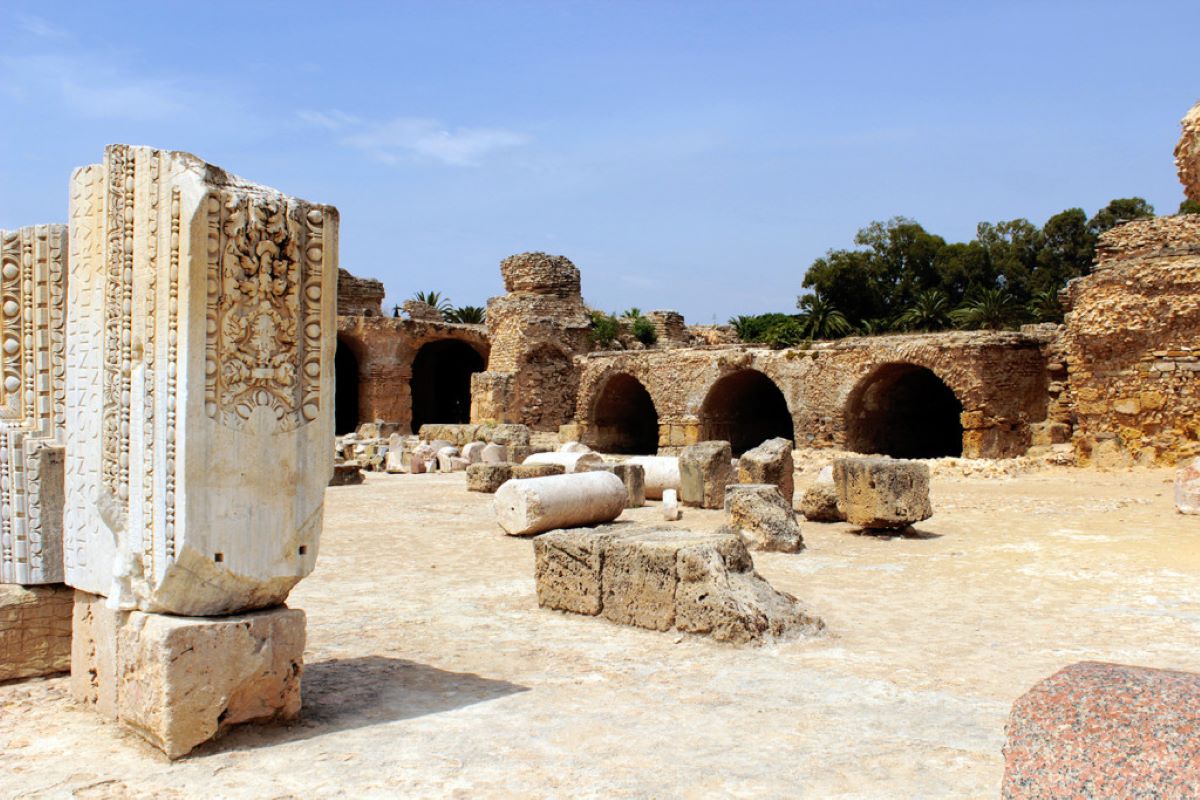
Carthage, the ancient city located in present-day Tunisia, is a fascinating destination that holds a significant place in history. Known for its powerful empire and strategic location in the Mediterranean, Carthage has captivated the imagination of travelers and historians alike. While many people may be familiar with the basics of Carthage’s rise and fall, there are several surprising facts about this ancient city that are lesser-known. In this article, we will delve into 14 intriguing tidbits about Carthage that will both educate and entertain. From its legendary founder to its innovative naval technology, Carthage proves to be a treasure trove of historical gems waiting to be discovered. So, buckle up and get ready to explore the incredible world of Carthage!
Key Takeaways:
- Carthage, an ancient city in Tunisia, was a powerful maritime and trading hub with impressive infrastructure. Its rivalry with Rome and influence on Roman culture make it a fascinating piece of history.
- The ruins of Carthage, a UNESCO World Heritage site, offer a glimpse into its rich cultural heritage, strong emphasis on education, and worship of the powerful goddess Tanit. Exploring this ancient civilization is a captivating journey through time.
Carthage was an ancient city located in present-day Tunisia.
Located on the coast of the Mediterranean Sea, Carthage was a prominent city-state in ancient times and played a major role in shaping the history of the Mediterranean region.
It was founded by Phoenician settlers around 814 BCE.
The Phoenicians, a seafaring civilization from the eastern Mediterranean, established Carthage as a trading outpost and it soon grew into a powerful city-state.
Carthage became a major maritime power and controlled a vast trade network.
Thanks to its strategic location, Carthage developed a strong navy and dominated maritime trade in the Mediterranean, establishing lucrative trading routes across the region.
The city was known for its impressive infrastructure and urban planning.
Carthage boasted impressive architecture, including grand palaces, harbors, and an intricate system of roads and aqueducts that showcased the advanced urban planning of the time.
Carthage was a rival to the Roman Republic.
The rivalry between Carthage and Rome eventually led to the series of conflicts known as the Punic Wars, with the most famous being the Second Punic War led by the Carthaginian general Hannibal.
Hannibal is famous for his daring military tactics and his use of war elephants.
Hannibal’s crossing of the Alps with his army and war elephants during the Second Punic War is considered one of the greatest military achievements in history.
Carthage was eventually defeated by Rome in the Third Punic War in 146 BCE.
After a lengthy siege, Rome emerged victorious and completely destroyed Carthage, leaving few traces of the once-great city.
Despite its destruction, Carthage continued to influence Roman culture.
Roman architecture, art, and literature were heavily influenced by Carthaginian culture, and many aspects of Carthaginian society were assimilated into the Roman Empire.
The ruins of ancient Carthage are a UNESCO World Heritage site.
Today, visitors can explore the archaeological remains of Carthage, including the ruins of buildings, baths, theaters, and the impressive Byrsa Hill, which offers panoramic views of the area.
Carthage was known for its rich cultural heritage and artistic achievements.
The city was a center of learning and produced notable philosophers, scholars, and poets such as Mago, the Carthaginian agricultural writer.
The Carthaginians were skilled merchants and traders.
Carthage had a thriving economy based on trade, and their merchants were known for their business acumen and extensive trading networks that extended throughout the Mediterranean.
Carthaginian society was known for its strong emphasis on education.
Education was highly valued in Carthage, and children from all social classes had access to schooling, with a focus on subjects like mathematics, language, and philosophy.
Carthage had a powerful goddess as its patron.
Tanit, the chief goddess of Carthage, was worshipped as the protector of the city and its people. She was associated with fertility, motherhood, and the lunar cycle.
The name “Carthage” translates to “new city” in Phoenician.
The name reflects the origins of the city as a new settlement established by the Phoenicians in the region.
These are just a few of the fascinating facts that make up the rich history of Carthage. Visit the UNESCO World Heritage site of Carthage to immerse yourself in the remnants of this ancient civilization and uncover even more surprising details about its storied past.
Conclusion
In conclusion, Carthage is a fascinating ancient city with a rich and turbulent history. From its humble origins as a Phoenician colony to its rise as a powerful maritime empire, Carthage played a significant role in shaping the Mediterranean world. The city’s influence can still be seen today in the ruins that stand as a testament to its former glory. Whether you’re interested in ancient civilizations, historical landmarks, or cultural heritage, a visit to Carthage is sure to leave you in awe. So, pack your bags and embark on a journey to unravel the secrets of this incredible city.
FAQs
1. When was Carthage founded?
Carthage was founded by Phoenician colonists in 814 BC.
2. What is Carthage famous for?
Carthage is famous for being the capital of the ancient Carthaginian civilization and its extensive trade network in the Mediterranean.
3. Are there any famous landmarks in Carthage?
Yes, Carthage is home to several famous landmarks, including the Carthage National Museum, the Byrsa Hill, the Punic Ports, and the Roman Amphitheater.
4. What happened to Carthage after the Punic Wars?
After the Punic Wars, Carthage was destroyed by the Romans in 146 BC and later rebuilt as a Roman city.
5. Can I visit Carthage today?
Yes, Carthage is now an archaeological site and a popular tourist destination. Visitors can explore the ruins and learn about the city’s history.
6. Are there any museums dedicated to Carthage?
Yes, the Carthage National Museum is dedicated to preserving and exhibiting artifacts and artworks from the ancient city.
Carthage's rich history and fascinating facts leave us wanting to explore more about the ancient world. From its impressive infrastructure to its cultural heritage, Carthage's legacy continues to captivate historians and enthusiasts alike. Speaking of captivating historical figures, have you heard about Hannibal Barca, one of the strongest and greatest warriors in history? His military prowess and strategic brilliance made him a formidable opponent during the Punic Wars.
Was this page helpful?
Our commitment to delivering trustworthy and engaging content is at the heart of what we do. Each fact on our site is contributed by real users like you, bringing a wealth of diverse insights and information. To ensure the highest standards of accuracy and reliability, our dedicated editors meticulously review each submission. This process guarantees that the facts we share are not only fascinating but also credible. Trust in our commitment to quality and authenticity as you explore and learn with us.


